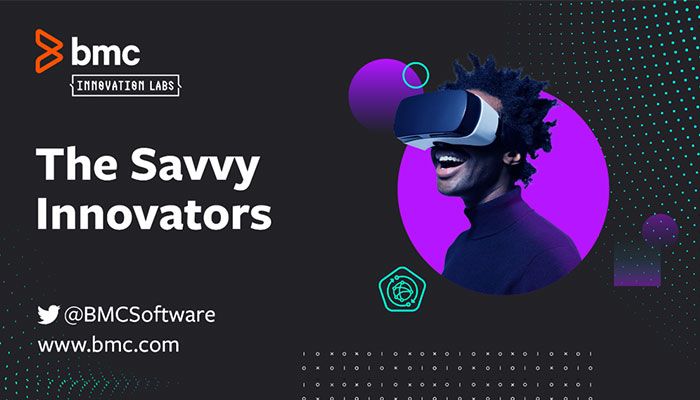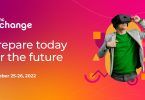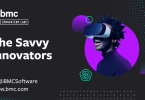Even in the age of digital business, artificial intelligence (AI), and data-driven automation, employees remain the lifeblood of every organization. Put in a position to do their best work, there’s nothing a motivated and engaged workforce can’t accomplish.
Conversely, an unsatisfying or unproductive work experience can send employees fleeing to the exits—taking valuable skills, experience, and insight with them. Meeting employee needs and expectations has always been critical, but in a world reshaped by rapid innovation, remote work, and soaring worker mobility, it’s become both more urgent and more challenging than ever.
A new episode of The Savvy Innovators, a Voice of America podcast series sponsored by BMC, unpacks the ways people and organizations are redefining the employee experience today. Lynn Moffett, VP of HR at BMC, and Jin Zhang, Engineering Director at Meta, offer their perspectives for navigating the evolution to the future of work—as it rapidly becomes the present of work. Highlights of their conversation follow.
Rethinking the infrastructure of work
Consider how radically work has changed over the last 30 years. In the early 90s, laptops and cell phones were rare perks, meetings took place exclusively in physical spaces, and “working from home” was commonly seen as malingering, fairly or not. As the pace of innovation only accelerates, what will the next 30 years bring—or the next five?
“It really challenges us to think about what infrastructure we are going to need for the future,” says Jin, citing advances like robotic process automation (RPA), process mining, chatbots, low-code workflow platforms, AI, machine learning (ML), and intelligent document processing. And it’s not just about technical innovation; companies also need to consider the ways people work together. “No matter where we are from a technology standpoint, we’re always going to need human connectivity. The pandemic really brought that into focus,” she adds.
The consumerization of technology is a perennial theme in the modern workplace, but it’s important to understand why it matters to employees. It goes beyond comfort and convenience. “People want to be productive,” says Lynn. “They want to be efficient in what they do. People want to add value, and they want to do it much earlier in their career. Meeting their expectations is not just about touchy-feely employee experience. It’s about driving better revenue and becoming a better competitor in the marketplace.”
For non-technical employees, automated tools that eliminate drudgery and deliver the right data at the right time can make a huge difference. For software engineers, more user-friendly development tools with built-in testing can enable shift-left practices and free up time to focus on higher-value work.
Getting distributed employees on the same page
The rapid rise of remote and hybrid work has posed a variety of challenges, from data security to employee wellbeing to the mechanics of blended onsite-remote meetings. “As we evolve, the workplace has absolutely gone beyond [the] reach of the office buildings,” says Jin.
“You naturally worry about the security of the laptop and its data. Things like security procedures and data classifications, if they’re done well, can be seamless for an engineer or a developer. If they’re not done well, and I have to seek permission or check in and out whatever piece of data or code I need to work with, that’s going to be a nightmare. It’s key for us to think about providing high ease of use experiences. The more you can automate, the more you can enable collaboration, break barriers, and drive toward that one single goal to move fast and delight our customers.”
As an HR professional, Lynn emphasizes that remote employees need to feel just as supported, connected, and included as onsite workers. “There’s a large collection of accessible tech that companies can use to help employees with managing at-home office needs, mental health needs, and professional and personal growth, and that foster collaboration and deliberately spread corporate culture in now-disparate work environments,” she explains. “Tech can humanize the remote work experience, allowing employees to connect and learn from each other and build company culture while not in an office.”
Companies should always be alert to ways to efface the difference and distance between remote and onsite employees. “Not only do you need to enable these new remote or non-traditional workspaces. You also have to enable holistic collaboration throughout your entire workforce,” says Jin. Early in the pandemic, she noticed that employees who joined a video call in a conference room lacked an equivalent to the Zoom hand-raising feature. “We invested to give folks in the physical room the same ability to raise their hands in the virtual meeting room.”
Navigating the shift to a digital-first culture
While data science is an increasingly vital element of people management, as talent leaders acquire and leverage knowledge about the workforce and its work practices, it’s important to start with a clear understanding of what you’re trying to achieve. “Before you decide on a digital-first strategy, take a step back and look at how people are working today, how you want them to work, and what they need to be successful and productive,” says Jin. “What is the problem we’re trying to solve? What is the need? What is the want? What is the desire?”
Change management is just as crucial. “We need to think about how we can move fast, but also about how we can bring everyone along, because people are on all different walks of their own journeys,” Lynn points out. “Some people are much further along in their own technological journey versus others. Some people get scared around change and what it might mean for their job. Maybe they’re great employees who need to be reskilled for new needs. You need to be intentional about both moving your company forward and bringing everybody along.”
Making it safe to fail
As people at all levels come up to speed on new digital tools, skills, and ways of working, they need to feel fully supported in their learning process. “Employees have to be comfortable to fail,” says Lynn. “You don’t want failure all over the place, but you can’t let perfection be the enemy of good. You have to give people that space as they’re adopting these new practices.”
Jin values the same willingness to take chances on the engineering team. “Engineers and developers should feel very comfortable in taking risks. As we’re working on a product and making choices about its design and implementation, that first iteration isn’t always going to end up the perfect solution,” she explains. “Just get up and dust off and keep moving. It’s about nurturing that culture, while also enabling building feedback and correction loops into the system so that if you fail, it’s not a problem.”
To hear more of Jin and Lynn’s conversation, including where AI/ML and augmented and virtual reality (AR/VR) fit into the changing world of work, listen to the whole podcast here: “Delighting Employees & Improving the Business: Modern Experiences.”
These postings are my own and do not necessarily represent BMC's position, strategies, or opinion.
See an error or have a suggestion? Please let us know by emailing blogs@bmc.com.





